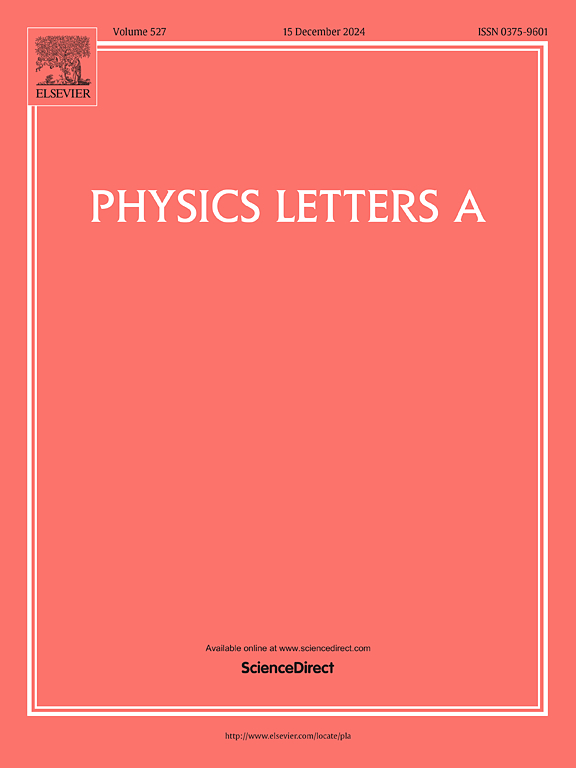Terahertz interface states in a heterostructure parallel plate waveguide
IF 2.3
3区 物理与天体物理
Q2 PHYSICS, MULTIDISCIPLINARY
引用次数: 0
Abstract
Heterojunction is usually regarded as an interface structure composed of two semiconductor materials with the different band structures. Some unusual interface effects, such as band bending, charge accumulation or depletion, will occur at the interface, which is completely different from the electrical and optical properties of a single material. Here, we report our experimental observation and theoretical and numerical validation of a terahertz (THz) interface state in a heterostructure corrugated parallel plate waveguide, which is seamlessly connected by two periodic corrugated waveguides with similar bandgaps but different structures. The THz interface state that we observed occurs at the connection of the two waveguides and causes an extraordinary narrow linewidth transmission peak within the original bandgap, whose mechanism is attributed to the local resonance. The center frequency of the transmission peak can be tuned by adjusting the interface length, while its bandwidth narrows with the increased number of periods of corrugated structure. These findings on THz interface states in heterostructure waveguides could be applicable in narrow linewidth filters, high-sensitivity sensors, and detectors.
异质结构平行板波导中的太赫兹界面态
本文章由计算机程序翻译,如有差异,请以英文原文为准。
求助全文
约1分钟内获得全文
求助全文
来源期刊

Physics Letters A
物理-物理:综合
CiteScore
5.10
自引率
3.80%
发文量
493
审稿时长
30 days
期刊介绍:
Physics Letters A offers an exciting publication outlet for novel and frontier physics. It encourages the submission of new research on: condensed matter physics, theoretical physics, nonlinear science, statistical physics, mathematical and computational physics, general and cross-disciplinary physics (including foundations), atomic, molecular and cluster physics, plasma and fluid physics, optical physics, biological physics and nanoscience. No articles on High Energy and Nuclear Physics are published in Physics Letters A. The journal''s high standard and wide dissemination ensures a broad readership amongst the physics community. Rapid publication times and flexible length restrictions give Physics Letters A the edge over other journals in the field.
 求助内容:
求助内容: 应助结果提醒方式:
应助结果提醒方式:


